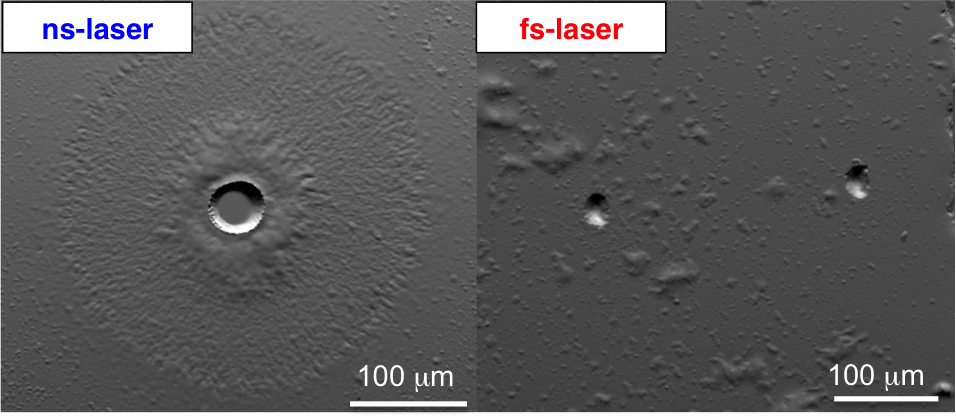Brett Isselhardt (14-ERD-082)
Abstract
Our aim is to address research issues related to the isotopic analysis of low-abundance materials, such as early solar system materials or nuclear fallout. Today, these issues limit our ability to answer fundamental chemistry questions about the genesis of our solar system or to rapidly quantify actinide isotope ratios in fallout. We will use resonance ionization mass spectrometry to rapidly and accurately quantify, in situ, isotope ratios for materials including plutonium, uranium, magnesium, beryllium, and lithium. The technique is a high-sensitivity, elementally selective, laser-based form of mass spectrometry that offers the potential to determine isotopic composition of materials without sample preparation and isobaric interference. Resonance ionization uses pulsed laser light that is resonant with a electronic excited state to excite and eventually remove an electron from the atom or molecule to create positively charged ions, which are then collected and accelerated into a mass analyzer. Our work will create an approach for answering long-standing questions in cosmochemistry that deal with the chemical composition of changes in the universe. This work will also lay the foundation for development of a resonance ionization mass spectrometry capability for characterizing debris from a radiological or nuclear event.
Our goal is to address a set of outstanding technical and scientific problems that have hindered the application of resonance ionization mass spectrometry to the analysis of materials ranging from post-detonation debris to meteoritic inclusions. The potential to quickly quantify relative isotope abundances of actinides and other diagnostic elements in post-detonation debris will enhance our ability to draw conclusions regarding device design and performance from debris analysis. Resonance ionization mass spectrometry can provide definitive isotope-specific information on fuel composition in post-detonation scenarios within hours of sample receipt. Successful completion of this research has the potential to address prominent needs identified by both the U.S. nuclear forensics and cosmochemical communities.
Mission Relevance
Developing a state-of-the-art resonance ionization mass spectrometry capability at Lawrence Livermore will ensure continued leadership in the core competency of nuclear, chemical, and isotopic science and technology in support of national security, specifically nuclear threat reduction via nuclear detection and forensics. It will also meet the goal of developing technological capabilities that advance scientific frontiers and address next-generation basic scientific issues related to the evolution of our solar system.
FY15 Accomplishments and Results
In FY15 we (1) completed the plutonium ionization model and compared model predictions to experimental results, (2) incorporated existing atomic data and ionization scheme details from available literature for additional elements (barium, cesium, and americium) into the resonance ionization model, (3) performed measurements of uranium and plutonium laser desorption from titanium and tantalum substrates to compare relative neutral atom yields, and (4) performed initial experiments using femtosecond-laser ablation and desorption of silicate materials to study improvements in the ability to produce species of interest from our samples.
Publications and Presentations
- Isselhardt, B. H., et al., Calculating relative ionization probabilities of uranium isotopes by resonance ionization mass spectrometry: Understanding the influence of laser induced bias on measured isotope ratios. (2015). LLNL-JRNL-648449.
- Isselhardt, B. H., et al., “Improved precision and accuracy in quantifying plutonium isotope ratios by RIMS.” J. Radioanal. Nucl. Chem. doi:10.1007/s10967-015-4393-x (2015). LLNL-JRNL-674877.






